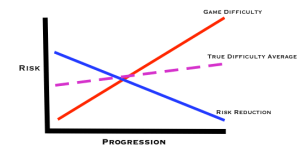Emergent Narrative and Encouraging Emergent Play
Games have two different kinds of narratives: Explicit and Emergent. Explicit Narrative is the story that the game tells to the player, and Emergent Narrative is the story the player creates for themselves as they play the game.

Games have two different kinds of narratives: Explicit and Emergent. Explicit Narrative is the story that the game tells to the player, and Emergent Narrative is the story the player creates for themselves as they play the game.
Perhaps the most noticeable game featuring Emergent Play is Minecraft, which sold to Microsoft for 2.5 billion dollars. Since then, Sandbox and Survival games have taken off, generating countless titles, almost all of which are Early Access, only a few of which will ever see completion.
Any time you get your player to say: “I Did ______ in [Insert Game Name]” then you have created Emergent Play [EP].
How do you get your player to put themselves in the place of their avatar? How do you encourage them to make decisions and create their own Narrative?
Examples of Emergent Play:
The concept of Intentional Emergence, or trying to encourage Emergent Play through game mechanics, has existed for a long time. Dungeons and Dragons marked the first significant development in the 1970s. It was a game designed to encourage players to create their own stories. The role of the “Game Engine” was assigned to the books and your Game Master. The mechanics had to be simple enough for a small group of players to use without too much hassle, but compelling enough to encourage creative play.
The arrival of interactive media provided a new avenue to explore Emergent Play. Rogue appeared, then Roguelike emerged as its own genre. Years later, Dwarf Fortress paved the way for Minecraft. And here we are:
Minecraft:
Probably the most popular game featuring Emergent Play to ever be published. At its height it had just under 10 million registered players.
Minecraft features an Open world that is procedurally generated. The player is dropped in a world that is persistent and reactive. The world reflects the changes you make to it, and reacts to many of your actions. It wasn’t uncommon in Beta to accidentally burn down a significant portion of the map due to a stray bit of fire.
When you start a new game you are dropped on a (mostly) untouched world. There are very few prompts given by the game as to what to do. I spent more time playing Minecraft than most other games that were much more narrative, and I know the same is true for many.
Games that encourage Emergent Play also create replay ability.
Eve Online:
One of a few MMOs that is composed almost completely of Emergent Play.
While the structure of the universe is predetermined, its absolutely vast, and most of the geography is held by player made and controlled “Corporations”.
The end result of all of this is My second favorite Story to come out of the games industry. In short, A player defrauded thousands of other players out of 790 Billion worth of in-game currency (ISK). In order for this to happen, not only did players have to organize a financial system, but another player had to sell the rest of them on an Investment scheme in the actual game.
This teaches us two things. First, that emergent play can mimic real life, especially when the engine allows for gameplay to occur realistically. Second, that traditional morality extends as much to games as it does to the financial sector
Shadow of Mordor:
Worth mentioning due to its Nemeses Mechanics.
The Nemesis system was an addition to the spawning mechanics of Shadow of Mordor. It allowed for randomly generated enemies who have defeated you to come back and fight you again, but stronger. The environment of Shadow of Mordor reacts to the player.
This was a mechanic designed to encourage Emergent Play, and it worked.
Pokemon:
A great example of a very linear narrative that still is intentionally emergent.
You have one linear path and very noticeable chokepoints. But even though the player’s choice in narrative is restricted, Emergent Play isn’t. In the end, even with a static and unchangeable world, and even with a completely linear narrative, Player Control also creates Emergent Play.
Emergent Archetypes
These are some of the methods that have been used to encourage Emergent Play. This is by no means a comprehensive list,
Persistent/Reactive Environment
This is where Minecraft excels. The ability of the player to have agency of the world they are in gives the player a sense of ownership over their game world. Emergent Play occurs any time you get your player to say, “I made this”. If your goal is to have the player put themselves in the place of their avatar, the best way to do it is to have the environment react to the avatar as if it were actually there.
This can be as complex as having NPCs pick up your items when you’ve dropped them and return them to you, Or as simple as having the grass sway as you walk by. The environment can also be persistent; the changes the player makes can have a greater lasting impact on the game world.
Player Control
Giving the player control over how they reach their objective can help encourage Emergent Play.
Lets talk about Pokemon. With very few exceptions, someone playing a Pokemon game will not be able to change the world around them, except where permitted by the narrative. People still have very emergent experiences with it because the game allows the player to decide how they want to accomplish the objective. From what starting Pokemon you choose to how you build your final team. The player is given agency, and agency can create Emergent Play
Risk Reduction
Player control can also be expressed in terms of Risk Reduction.
Emergent Narrative is a consistent pattern of Risk and Reward, where the given “reward” is often a reduction of risk. This is evident in most Sandbox and Survival games, where the more you manage to build and prepare the easier the game becomes. Minecraft has a tiered system of difficulty, where certain areas within the game are only accessible after you craft the right items. Even games like Call of Duty will let the player reduce risk by providing them with better guns and tools as the campaign moves forward.
You can express this graphically:

Risk is an abstract value that represents the difficulty of the game, while Progression represents your player’s total playing time.
Typically, game difficulty will increase slightly over time. In games that use Risk Reduction as a mechanic, Game difficulty increases sharply while your Risk Reduction mitigates the rise in difficulty. Combine your Game Difficulty with your Risk Reduction and you get your True Difficulty Average.
DayZ is interesting in that the game difficulty doesn’t increase. The player reduces their risk by gathering materials and equipping themselves. If you look at its Risk/Progression, the True Difficulty Average would trend downward, meaning the game gets easier the longer you play it. BUT, the world in DayZ is unpredictable.
Random Chance
Critical Failures and Critical Successes
This is one of the oldest ways to create Emergent Play. Empire of the Petal Throne first used the concept of a Critical Hit. If you rolled a 20 on a D20, you did double the damage.
If you’ve ever played an RPG, then chances are you’ve run into the Critical. Entire blogs now exist where players shame their die for rolling a Natural 1. Players build their own personal narrative around their random successes and failures.
Any instance where a player is forced to rely on random chance creates risk-taking behavior. If you do [This] then [That] could happen. Emergent Narrative is a consistent pattern of risk and reward, so random chance can be used to introduce Emergent Elements. We, as a species, have a tendency to find meaning and story in truly random happenstance, and as a game designer you can use this to your advantage.
But be careful to test the system. Introducing random chance into your game should never interfere with your player’s enjoyment of your game. A Game can be difficult, but it should never be difficult to play.
The D20 is worth mentioning again because it provides you with a good place to start your percentiles at. The chance of rolling a 1 on a D20 is 5%. That number seems to be at the perfect place to make a player really question whether the risk, or possible reward, is worth it.
Choice
The least amount of work it will ever take you to introduce Emergent Elements into your game.
At its worst, introducing arbitrary choice is a lazy way to make the player feel like they have agency. At its best, it gives the player Choice encourages the player to live in the world you have created, and to replay the game just to see what would have happened had they made another choice
Faceless/Voiceless Avatars
So many characters are Faceless and Voiceless. I could list them all here, but I value my sanity, and there are only so many pictures you’d be willing to scroll through until you found text again.
The “Generic” character has existed for, quite possibly, ever. It is a device as old as story itself. It is useful because it allows us to place ourselves in the characters shoes. In literature that makes us identify with the central character, but in Interactive Media, it creates Emergent Play
As some examples: Gordon Freeman, Samus, Ness, Master Chief. I could go on.
I won’t.
Customizable Cosmetics and Names
In the end, even just giving your player the option to name themselves or change how they look can go a great way to giving your game Emergent Play. People grow attached to the things they name. People also grow attached to the faces and clothes they painstakingly craft before they even start playing the game.
Skyrim’s Facial Generator is a minigame. How often do you see your face during Gameplay? Does it effect the story? But still, players take pride in making their avatars, they take the time to make them look exactly like they want, and that plays to your advantage. This also comes back around to providing your players with choice. What the avatar looks like has no impact on the game, but it makes the player feel like its theirs, or like its Them.
Read more about:
BlogsAbout the Author(s)
You May Also Like













